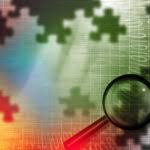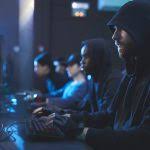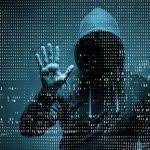The Secret Language of War A History of Codebreaking.
This journey through the fascinating history of codebreaking reveals a silent, relentless battle of minds that has at times, dramatically altered the course of human events.
The art of codebreaking is as old as secrets themselves. Early methods, like Julius Caesar’s simple substitution cipher, gave way to more complex polyalphabetic ciphers in the medieval period, each designed to obscure meaning from enemy eyes. As communication methods evolved, so too did the sophistication of encryption, leading to a constant, escalating arms race between code makers and code breakers. By the early 20th century, with the advent of telegraphy and radio, the stakes soared, prompting nations to form specialized units dedicated to intercepting and decoding enemy communications.
World War II: The Crucible of Cryptography
World War II stands as the undisputed golden age of codebreaking, a period where innovation and sheer intellectual prowess directly influenced the outcome of major conflicts. Nowhere was this more evident than at Bletchley Park in England, the clandestine nerve center where some of the finest minds in Britain were assembled.
At Bletchley, a diverse group of mathematicians, linguists, chess champions, and engineers worked tirelessly to crack the seemingly unbreakable codes of the Axis powers. Among them was the visionary mathematician Alan Turing, whose theoretical work on computation laid the groundwork for modern computers and whose practical genius was instrumental in designing the “Bombe,” an electromechanical machine used to decipher the daily settings of the German Enigma machine.
The German Enigma machine was the epitome of complexity, producing billions of possible settings, making it initially appear impregnable. However, through relentless effort, brilliant insights, and the capture of some key materials, the team at Bletchley Park systematically broke the Enigma code. This provided the Allies with “Ultra” intelligence, offering invaluable real-time insights into German military plans, troop movements, and U-boat locations. The breaking of Enigma is widely credited with significantly shortening the war in Europe and saving countless lives.
Across the globe, in the Pacific theatre, another monumental cryptologic battle unfolded. The breaking of the Japanese naval code, particularly JN-25, was an equally groundbreaking achievement. Allied intelligence units, primarily in the United States and Australia, painstakingly pieced together solutions to this complex cipher. This intelligence proved decisive in pivotal engagements, most notably the Battle of Midway, where foreknowledge of Japanese attack plans allowed the U.S. Navy to inflict a crippling defeat, irrevocably shifting the balance of power in the Pacific.
The Enduring Legacy: Post-War Cryptology
The triumph of codebreaking in World War II did not mark an end to its evolution; rather, it ushered in a new era. The invaluable lessons learned, the advanced techniques developed, and the talent cultivated led directly to the establishment of the National Security Agency (NSA) in the United States, consolidating and expanding cryptologic activities under one roof.
During the Cold War, the “secret war” intensified. The arms race between increasingly sophisticated encryption methods and the relentless pursuit of their decryption continued, with both sides investing heavily in research and technology. Cryptology became a cornerstone of national security, providing vital intelligence on adversaries’ intentions, capabilities, and vulnerabilities.
From ancient ciphers scratched on parchment to the mechanical marvels of Bletchley Park and the digital complexities of today, the history of codebreaking is a testament to human ingenuity, perseverance, and the critical importance of information. It is a story of unsung heroes, quiet brilliance, and the profound impact that the deciphering of a single message can have on the fate of nations. The “secret language of war” continues to evolve, ensuring that the silent battle of wits remains a vital, unseen force in global affairs.






